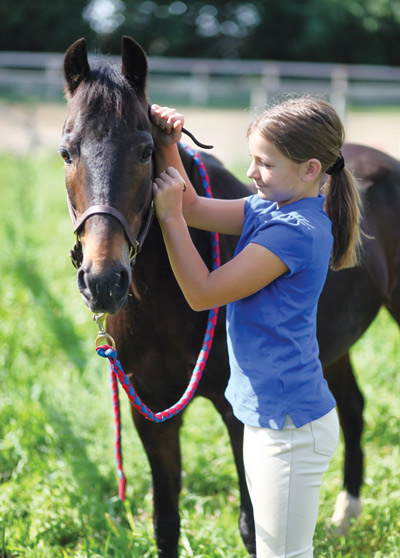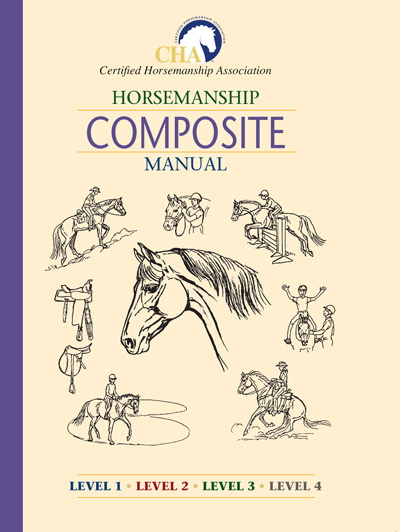Learn how to safely catch and turn out a horse with Young Rider magazine, with help from the Certified Horsemanship Association.
Catching Horses

To catch a horse:
◆ You need to be quiet and confident. If you have a halter or lead rope, put it over your shoulder and out of sight.
◆ Hold your hand out palm down so that the horse can sniff it. Speak to him pleasantly.
◆ Walk slowly up to his left side, near the shoulder. If he starts to move away, stop. When you get up to the horse’s left shoulder, scratch his neck gently.
◆ Slide your hand along his neck, slip a lead rope around his neck right behind his ears to hold him while you slip his halter on.
Sometimes a horse that doesn’t want to be caught will come up to you if you are quiet and patient and ignore him. Pretend that you are interested in another horse or something you have in your hand. Quick moves will scare him away and might make him kick or run off.
When leading a horse, even if it is for a short distance, always use a lead rope.
If anything should spook the horse while you are holding him with just your hand on the halter, he can get away and/or you may get hurt, especially if you hold on.
Turning Out Horses
Turning a horse loose:
◆ Lead him through the gate. Make him turn around and face you while you shut the gate.
◆ When he is standing still, remove his halter or unsnap the lead rope.
◆ Never let him rush through the gate or pull away from you. He will become wild and hard to handle when you are letting him go.
◆ Don’t chase him or encourage him to jump away when you let him go. It may make him kick.
It’s safer for the horse if his halter is removed when he is turned loose. He can get a leg caught in the halter or get the halter caught on an object and hurt himself very badly. This means, however, that he may not be as easy to catch as when the halter is left on. If a halter is left on a loose horse, it should have a breakaway leather strap.

Excerpted from Level 2 of the Certified Horsemanship Association (CHA) Composite Horsemanship Manual, a four-level manual written by professional horsemanship instructors that contains a complete horsemanship program for riders of all levels. For more info, visit www.CHA.horse/shop-educational-manuals.
This article originally appeared in the Fall 2020 issue of Young Rider magazine. Click here to subscribe!


